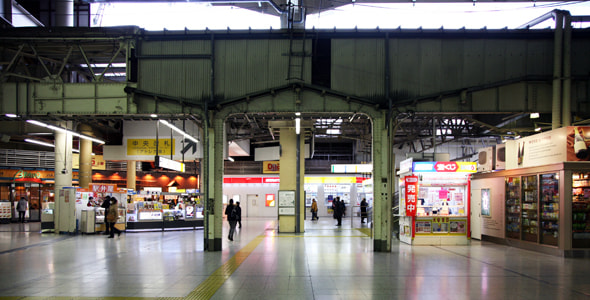
Near the Central Gate, there is a passage that has an old-style structure.
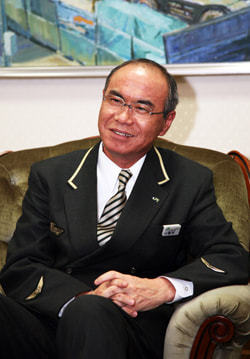
Yasuhisa Sonoda, the stationmaster of Ueno Station
We talked with Yasuhisa Sonoda, the stationmaster of Ueno Station.
Q: Could you tell me about the present station building?
Sonoda : The present station building is not the same building as in 1883 when the station was opened. The original building at that time was destroyed by the Great Kanto Earthquake in 1923. The present station building was built in 1932. Although the inside of the station has been remodeled from time to time, the area spreading from the Hirokoji Exit to the Main Exit was not damaged by air raids during World War II, so its exterior remains as it is.
Q: Has the structure of the station not been changed since its foundation? Does the station have basements from the beginning?
I heard that when the station was built in 1932, it had two basements. The station still has a structure in which materials are brought up from the bottom. Now, aside from passages leading to the subway and the Keisei Line, the basements are used as a distribution warehouse and a place for unpacking and sorting goods. The Tohoku/Joetsu Shinkansen runs in the fourth basement. The Shinkansen's platforms in the basement had been constructed from the time when the station was owned by Japan National Railways. Its platforms are located just under the 17th to 20th tracks. The locations of the present basements are different from those of basements built in 1932. Also, the 18th to 20th tracks on the first floor were remodeled, and used for the Shinkansen. A building was built above the tracks, and a stationmaster's office, a room reserved for special guests and other facilities were made in the building. The area around the 13th and 14th tracks in front of the Central Gate still retains an atmosphere at that time. By the way, in 1927, the Tokyo Underground Railway's section between Ueno and Asakusa (present-day Tokyo Metro, Ginza Line) was opened.
Q: Have positions of art works and monuments placed in the station been changed since the station's foundation?
The position of "Statue of Wings" by Funio Asakura is not changed, but the position of "Three Phases" by Fumio Asakura was changed. The monument of "Ah, Ueno Station" was placed just outside the Shinobazu Exit. You can leave the station by walking through the mezzanine level to the Asakusa Exit. Now, you can walk down the stairs in the middle of the passage, and reach the Main Exit. Previously, there were the Asakusa, Shinobazu and Ueno Exits, but the names were changed around 1965, and the Park Exit was made. Later, the pedestrian bridge was newly built.
The dimensions of the station have not been changed since the station's foundation in 1932, but the number of passages has been increased. Although the pedestrian bridge was later built, aside from the Shinkansen's platforms, other platforms in the station have not been changed significantly. Looking at a station map of the station, which was made around 1883, there was only one platform for Takasaki/Utsunomiya Line. The station building that is so-called "book store" has not been changed since its foundation. The atre and the ecute were built as commercial facilities in the station, but the station itself was not enlarged.
Q: How many passengers get on and off at Ueno Station each day? Was Ueno Station affected by the Great East Japan Earthquake?
The number of passengers who get on and off at Ueno Station is about 350,000 a day. Most passengers make connections to subways, commute to work/school, or go to the zoo or museums. In the morning, quite a lot of passengers from Utsunomiya Line make connections to Yamanote Line and Keihin-Tohoku Line, but they do not get off at Ueno Station, so the number of them is not counted as a ridership.
Emergency supplies are also kept in the station so that people can use the station as a temporary evacuation area when disasters occur.
Q: How many staff members are working at Ueno Station?
The number of staff at Ueno Station alone is about 300. Duties at the station, including ticket selling, information services at gates, traffic control by signals and services at platforms, start around 4:00 a.m. and end around 1:30 a.m., so about 80 staff members always stay in the station, and work on a shift. (continued in the upper right column)
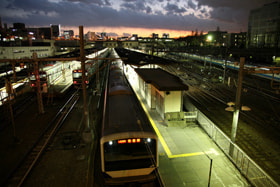
Q: What is a name of the place where the Cassiopeia overnight express train stops?
The 13th track where the Cassiopeia stops is called "Itsutsuboshi Waiting Area" because many sleeper trains, including the Hokutosei and the Akebono as well as the Cassiopeia, arrive and depart from the track. When the area was set up, it was a square, but now it is reduced. The only one train of the Cassiopeia makes three round trips a week between Ueno and Sapporo. It takes a whole day to go to Sapporo or return to Ueno, so the train runs every other day, but a large number of people use it.
Q: I expect that railroad services in the future will be high quality ones like that of the Cassiopeia or Orient Express in Europe. What do you think about it?
As far as customer needs go, there are customers who want to relax and enjoy a journey of the train, while other customers want to fly from Haneda Airport, and reach Sapporo in a short time. More express trains used to arrive and depart from Ueno Station, but the number of passengers on these trains has declined due to the opening of the Shinkansen and other reasons. I think many customers want to use their time effectively. In order to improve transport services of railroad, we need to provide services that can satisfy both types of customers. Also, trains that transport passengers in the metropolitan area, such as Yamanote Line, and trains that run between cities, such as the Shinkansen and limited express trains, have different roles. We will provide services based on customer needs.
Q: Recently, stations are being transformed into station complexes. What are your plans for the future? I heard that there are a variety of developments, including the facility "2k540" which is set up in parking lots and warehouses under the elevated railroad between Okachimachi and Akihabara.
As the birthrate declines and the population ages, the number of railroad's customers are expected to be decline. In order for customers to use the station more conveniently in a way they use facilities, including the atre and the ecute, we have built facilities that can be used by customers when they use the station.
We aim to develop a station that can be used any time other than as a transit point. If you see 2k540, your image of a space under an elevated railroad would be changed. Attempts like 2k540 are planned by JR East Urban Development Corporation. Also, there is "NO MO NO," a direct retail store, which is aimed at promoting regional development under the theme of locally produced products, in Ueno Station. It is a facility and event, in which "seasonal food, local products and products related to local regions" that are not available outside the regions are sold. It is also aimed at motivating customers to visit the regions through serving local food and products. The store is based on the concept of promoting exchanges of "products" and "people." Regions and contents that are introduced in the store are changed periodically.(continued in the next page)
The preset Ueno Station's structure can be viewed at a website of JR East. Guide Map for Ueno Station
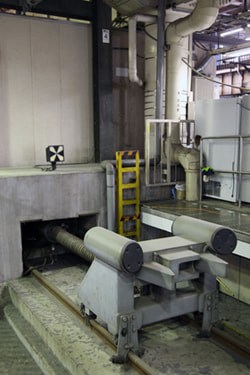
The starting point of the Tohoku Main Line
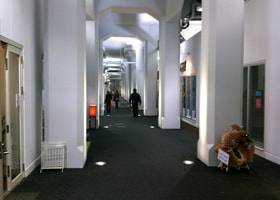
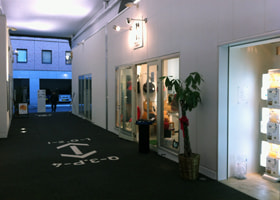
2k540
A facility on the theme of "manufacturing" that is set up under the elevated railroad between Okachimachi and Akihabara. The facility name "2k540" is a railroad terminology meaning that the facility is 2 km 540m away from Tokyo Station. Since it is located between Akihabara and Okachimachi, it is also called "2k540 AKI-OKA ARTISAN."

Yasuhisa Sonoda, the stationmaster of Ueno Station

The starting point of the Tohoku Main Line


2k540
A facility on the theme of "manufacturing" that is set up under the elevated railroad between Okachimachi and Akihabara. The facility name "2k540" is a railroad terminology meaning that the facility is 2 km 540m away from Tokyo Station. Since it is located between Akihabara and Okachimachi, it is also called "2k540 AKI-OKA ARTISAN."








